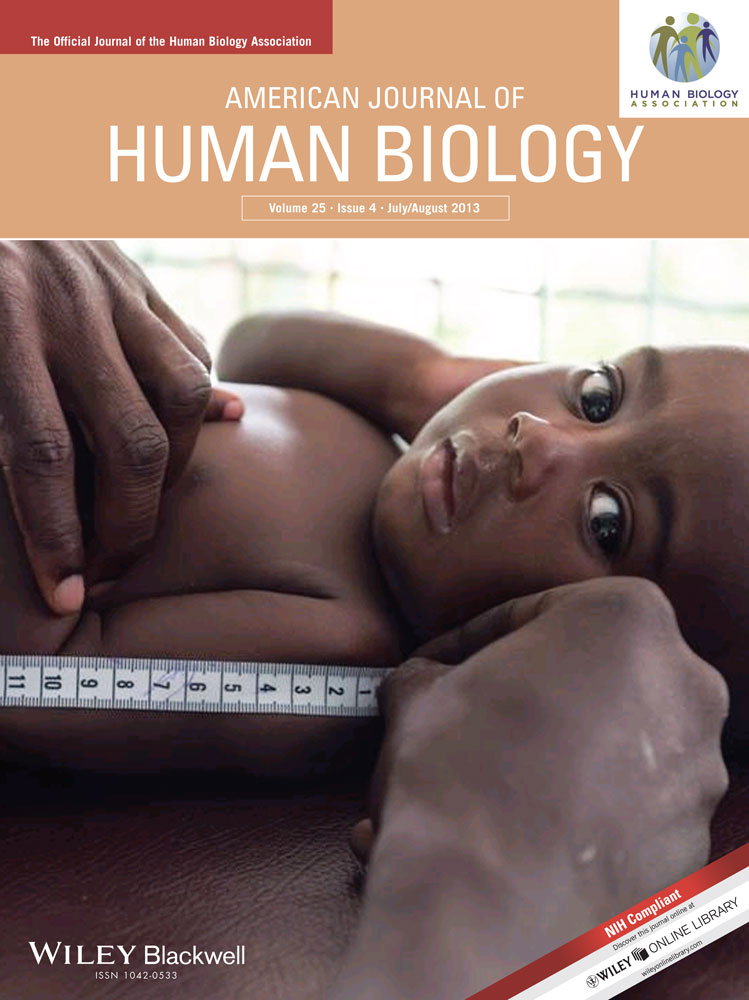Causes and Consequences of Human Migration: An Evolutionary Perspective. Edited by Michael H. Crawford and Benjamin C. Campbell. New York, NY: Cambridge University Press. 2012. $103.00 (cloth), $79.00 (ebook).
Migration has always been a part of our species' history as individuals and groups have dispersed into different environments under different historical circumstances, ranging from our species' dispersal out of Africa, to major prehistoric and historic patterns of movement and settlement, to contemporary patterns of international migration. This volume focuses on biological, cultural, and demographic aspects of human long-distance migration (the book focuses on long-distance patterns of dispersal, settlement, and culture contact, as compared to studies of migration between local populations). Most of the chapters were contributed based on papers given at a conference on human migration at the University of Kansas in 2010, with additional chapters solicited to broaden the coverage.
The book consists of 26 chapters. The first chapter is a brief overview by the editors and the final chapter by O'Rourke is a general overview of the relevance of studies of migration for understanding the history of our species. The remaining chapters are then organized into two sections. The first section is broadly labeled ‘Theory’ and consists of six chapters examining human migration from a broad perspective with specific emphasis on the biological consequences of migration from different theoretical perspectives. Following a short but precise review of dispersal and modern human origins by Stoneking, other chapters examine migration from a variety of perspectives, including some novel (to me) treatments of biochemical/neurological correlates of migration (Campbell and Barone) and epigenetic effects relating to nutrition (Mosher). The remaining chapters examine diverse topics, ranging from the relationship of migration to plasticity, the evolutionary significance of kin-structured migration, and an interesting review by Crawford and West comparing the genetic consequences of migration in different parts of the world—the Caribbean and Aleutian Islands.
The remaining 18 chapters provide an examination of the causes and consequences of migration organized by geographic region. Some of the chapters are review papers, and others present results from specific case studies. Many of the chapters integrate findings from molecular genetic studies (mostly mtDNA and Y-chromosome variants) as well as archaeological and linguistic evidence. The first four chapters of this section deal with African populations, two about migration in Africa, and two examining African immigrants to the New World (one a cultural anthropological study by Janzen about recent immigrants to Kansas, and the other a comprehensive review by Barquera Acuña-Alonzo of the biological and genetic consequences of forced migration to Mexico in historic times). Four chapters focus on Europe, also containing studies of migration and population origins (Basque origins, divergence of Roma populations) as well as genetic structure of migrants to the Americas (individuals of Scottish ancestry in Kansas, Mennonites in Kansas and Nebraska).
Three chapters examine Asian populations in a broad sense, including a study of tuberculosis dispersal from East Asia, international migration from China to Peru, and a thorough review by Aldenderfer of the history and biological consequences of migration to high altitudes in Tibet. There is only one chapter focusing on Oceania, but this one is an excellent review of Polynesian and Micronesian origins by Matisso-Smith. There are four chapters on the Americas that look at the history and consequences of migration to the New World, including specific case studies from the Amazon region, Peru, and Brazil and a review of migration into pre-Hispanic and contemporary populations in Mexico. The geographic review section ends with two chapters examining the genetic effects of migration in the Caribbean, one on an Indo-Costa Rican population and the other on the Garifuna.
No single volume can encompass every aspect of human long-distance migration, but this volume does a good job of providing a set of examples that look at the common questions of causes and consequences from diverse viewpoints. One of the major strengths of this book is the organization of most chapters by geographic region, making many chapters good resources for review. Another nice touch is the book's preface which includes interesting anecdotes about the migrant experience of a number of the authors of the chapters. Much of the material is both biocultural and holistic in nature, with particular appreciation for the value of integrating information from archaeology, demography, ecology, and genetics. The contributions of the different subfields of American anthropology are apparent, showing that the topic of migration is of broad anthropological concern, providing us with an additional point of communality in these days of increasing disciplinary specialization.
-
John H. Relethford
-
Department of Anthropology
-
State University of New York College at
-
Oneonta
-
Oneonta, New York




